Hurtigruten Norwegian Coastal Express voyage
Sailing to some of Scandinavia’s most isolated communities, this is not your typical cruise-ship voyage.
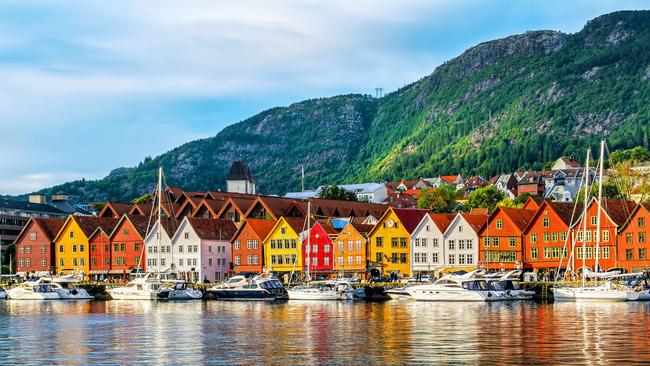
It’s difficult to imagine a more unlikely place for a weekend beach escape, but the residents of Honningsvag on the northern tip of Norway’s Mageroya Island know how to have fun in the sun. That’s especially true when it’s shining 24/7, as occurs at 71 degrees north, a latitude at which the long bright days of summer blur into one another. When the mercury hits 18C and the water is a balmy 10C, locals converge on a sandy arc affectionately known as Copacabana.
“It’s our Brazil,” our guide says jokingly as the tour bus swings past the deserted beach en route to North Cape, the most northerly point of continental Europe accessible by road. There will be no board shorts or bikinis today at this inhospitable place perched more than 300m above a forbidding ocean. Shrouded in low cloud, the tundra is being blasted by a freezing gale that stings our faces with rain and almost blows us off our feet. It’s exhilarating to be out in the elements, though. A short stumble through the wind from the visitor centre stands a bronze statue of a woman and child gazing wistfully towards the ocean; it honours the many fishermen lost to the depths of the Barents Sea. Nearby is the much-photographed steel globe that has come to symbolise Nordkapp, a place that has been drawing international visitors since an Italian priest first stopped by in 1664.

My visit takes place on day six of a voyage north from the picturesque harbour city of Bergen, best known for its row of colourful Hanseatic trading buildings dating back to medieval times. Norwegian operator Hurtigruten has been plying these coastal waters for 130 years, servicing the many communities that eke out a living, some in extreme isolation. This is not your usual cruise itinerary. Our ship, MS Kong Harald, can carry almost 600 people and although there are plenty of tourists on board from the likes of Scandinavia, Germany and the US, plus a sprinkling of Aussies and Kiwis, many passengers are Norwegians simply travelling from A to B. Every few hours, the ship pulls into a settlement to deliver anything from motorbikes to the mail. Sometimes it’s in port for 10 minutes, just long enough to unload; sometimes it stays for hours, allowing passengers to disembark and explore independently or take an organised excursion. It’s like a Norwegian tasting menu, serving delightful little morsels that whet the appetite, interspersed with more sizeable dishes that are immersive and satisfying.
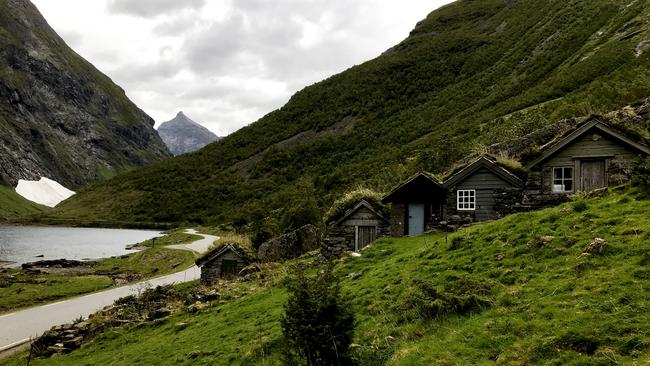
On one of these longer jaunts, from the hamlet of Urke, we travel by bus along the shore of Norangfjord, where jagged peaks are still pocketed with snow. German emperor Kaiser Wilhelm II fell in love with this region and would visit each summer, bringing a dozen ships laden with his holiday essentials. Many well-heeled travellers followed his lead. Overlooking the water is a grand 19th-century hotel, now a Relais & Chateaux property, that has counted Coco Chanel, Karen Blixen and Arthur Conan Doyle among its guests.
Further up in the hills are far more modest lodgings, like something from a children’s story book; off-grid schillings, or shacks, their roofs thickly layered with moss and grass, hunker in a verdant valley. Shepherds would shelter here while minding their flocks in the warmer months.
On a tour of Alesund, we learn about the devastating fire that left 10,000 of the town’s residents homeless in the dead of winter in 1904. The subsequent rebuilding program resulted in an abundance of gorgeous art nouveau facades adorned with floral motifs and Nordic flourishes.
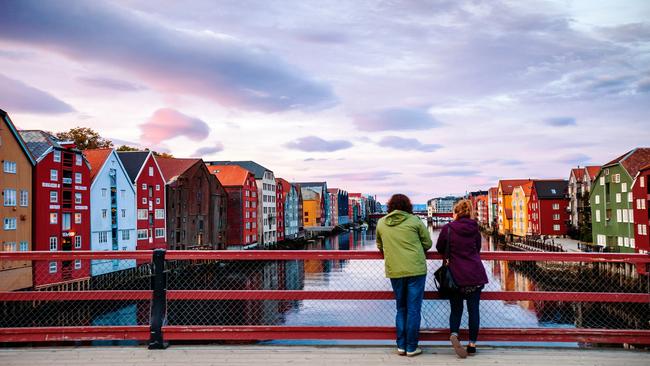
In Trondheim, a handful of us don dry-suits and life jackets and kayak down the River Nid to the centre of town. We pass stately homes with neat rose gardens before gliding beneath the 17th-century Old Town Bridge to admire heritage-listed warehouses painted traffic-light yellow, red and green, sitting cheek by jowl along the waterway. Once used to store grain, sugar, dried fish and salt, they’re now prime real estate filled with apartments, cafes and galleries.
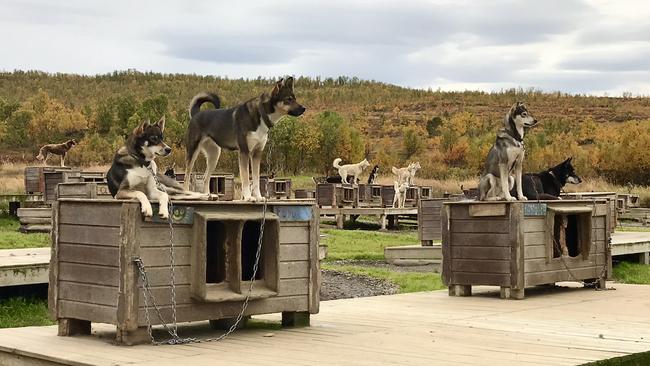
On the outskirts of Tromso we meet a raucous cohort of sled dogs, a hardy mixed breed that can haul three times their weight. Filled with boundless energy, they can run for hours and live outside regardless of the weather; with their double coats, they find minus 30C much more bearable than summer temperatures, which in recent years have been on the rise. Despite their tough exterior, they’re big softies, demanding pats and affection.
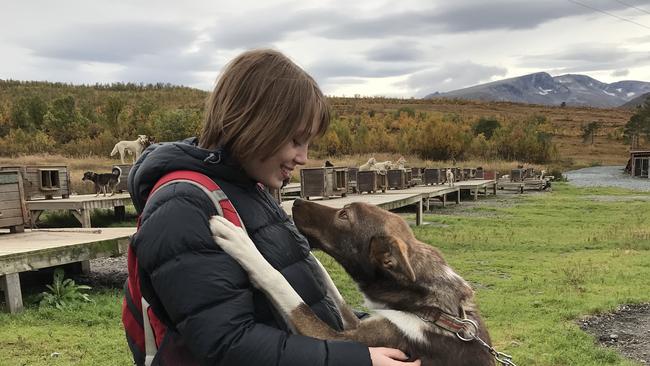
Day four of the voyage raises adrenaline levels to new heights. It begins with MS Kong Harald’s crossing of the Arctic Circle, an event that draws most passengers to the ship’s top deck. I’ve been wondering when one of Norway’s most famous exports might pop up, and the moment has arrived. As we depart the port of Ornes, the catchy intro to A-Ha’s 1985 hit, Take on Me, starts playing over the PA. Suddenly everyone is bopping along while pointing out cute cottages nestled on the water’s edge. Tradition demands we submit to a special blessing to ensure good weather for our passage to Kirkenes, near the Russian border, and a crew member amusingly disguised as Njord, god of the sea, is ready to do the honours. We duly line up to have iced water tipped down our back, rewarded for our bravery with a warming nip of Frangelico liqueur.
But the real excitement comes a few hours later in Bodo when, decked out like Scandi tradies in fluoro jumpsuits, goggles and gloves, we board Zodiacs to experience the world’s strongest tidal current. Four times a day, 400 million cubic metres of water surges through the treacherous narrow strait at Saltstraumen. The result is a tumultuous wash tub of whirlpools and waves that could surely upend our little boat and suck us down, never to be seen again. Our captain skilfully negotiates the chaos, weaving through the maelstroms and occasionally zooming straight across one of the watery twisters. It’s utterly thrilling.
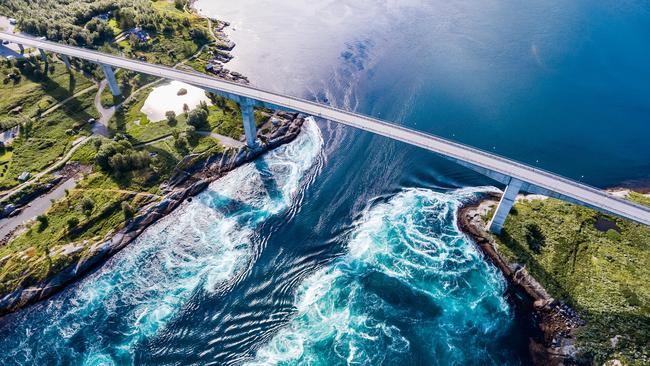
On board, our days are a gentle meander from meal to meal with the occasional coffee and skillingsboller (cinnamon bun) in the cafe. Menus showcase traditional cuisine, with Hurtigruten sourcing 80 per cent of its ingredients from Norwegian suppliers as part of its sustainable Coastal Kitchen program. There might be Arctic char (fish) from Sigerfjord, the strangely sweet “brown cheese” collected from an organic goat farm during a shore excursion, fresh berries, seaweed and reindeer. A five-course fine-dining experience runs the full gamut of Norwegian flavours from kid tartare, smoked mackerel and kelp-braised lamb to ice cream flavoured with aquavit, the fiery local liquor.
It seems impossible to nab one of the coveted comfy armchairs lining the perimeter of the glass-clad Explorer Lounge, so instead I take in the views from the stern on the blustery top deck. There are tiny hamlets dwarfed by glacier-carved cliffs and lonely lighthouses, blazing white and red stripes against stormy skies. Norway is home to about 300 peaks of more than 2000m. Even the word “mountain” feels woefully inadequate. They are menacing, monstrous and bleakly beautiful, and vast in their variety: sharp, cruel spires of rock that pierce low-hanging cloud; forested mounds crowned with granite; towering concave bluffs scooped out by ice.

Each evening, passengers gather in lecture rooms to hear about the next day’s adventures and to learn a little language and culture. During one info session, we’re shown mesmerising black and white footage of the extraordinarily harsh conditions endured by fisherman in the Lofoten Islands during the winter cod season. Ice-encrusted timber boats push through choppy seas; frozen socks hang on a line; men cling to a tall rack strung with cod to dry. And as we watch, a recording of a Norwegian folk band reveals the two resources essential to a fisherman’s survival, “fesk og potedes” (fish and potatoes).
Norwegian can seem impenetrable to the English speaker, but we are taught simple phrases that don’t tax the tongue too much – “Takk for maten” (thanks for the food), “Hvordan gar det?” (how are you?), “Jeg vil ha ol” (I want a beer). But there is one Norwegian word I spend the entire voyage trying to master – the name of the cruise line itself. For years, I’ve been butchering it phonetically, pronouncing it Hur-ti-grooten. Several guides attempt to teach me the errors of my ways, and I find myself muttering “Hoot-eh-root-un” at odd moments, rolling the “r” in an exaggerated fashion and inflecting each syllable with a sing-song lilt. By the time I disembark the ship, I reckon I’ve almost got it.
In the know
Hurtigruten offers northbound (seven days) and southbound (six days) Norwegian Coastal Express voyages between Bergen and Kirkenes, with the option of combining the two over 12 days. Cabins are modest but comfortable, ranging from interior options without windows to the Arctic Superior category, which has TVs and ocean views. Top picks are the Expedition Suites, which feature a separate seating area. All have ensuites. From $1606 a person, twin-share, for the seven-day northbound voyage from Bergen to Kirkenes, including all meals and onboard activities.
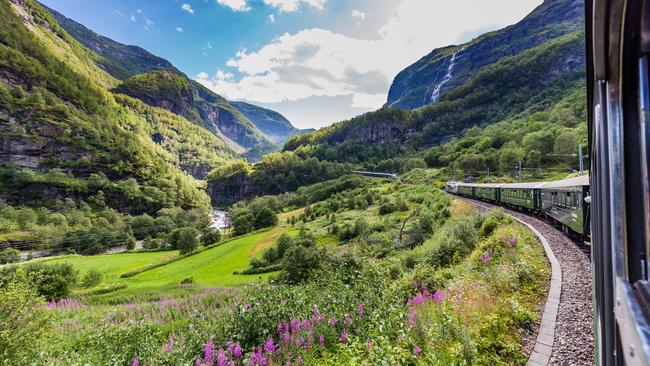
As an introduction to Norwegian life and land, Hurtigruten offers the nine-hour Norway in a Nutshell tour. The experience includes riding the extraordinary 20km Flam Railway, one of the world’s steepest and most spectacular rail journeys, from Myrdal to Flam. This is followed by a two-hour cruise by electric catamaran on stunning Aurlandsfjord and the Naeroyfjord, and a bus journey on one of Europe’s most hair-raising mountain roads. There’s some flexibility with departures, from Oslo or Bergen, and overnight accommodation is possible in Voss after the cruise (extra cost). Guests can be back in Bergen to meet their ship and embark on the cruise. From $417 a person.
More to the story
Hurtigruten Norway is on a mission to reduce the impact of its operations on the environment. Its ambitious Sea Zero research project aims to build the first zero-emissions ship by 2030. The company became the first to introduce battery/hybrid-powered vessels in 2019 when its expedition arm unveiled the new MS Roald Amundsen, followed by MS Fridtjof Nansen. The same technology is now being applied retrospectively to the seven-strong Coastal Express fleet as part of a €100m ($155m) upgrade due to be completed by the end of this northern summer. The project harnesses a range of innovations to create quieter and more environmentally friendly ships, cutting carbon dioxide emissions by a quarter and reducing nitrogen oxide gases by 80 per cent.
Penny Hunter was a guest of Hurtigruten.




To join the conversation, please log in. Don't have an account? Register
Join the conversation, you are commenting as Logout